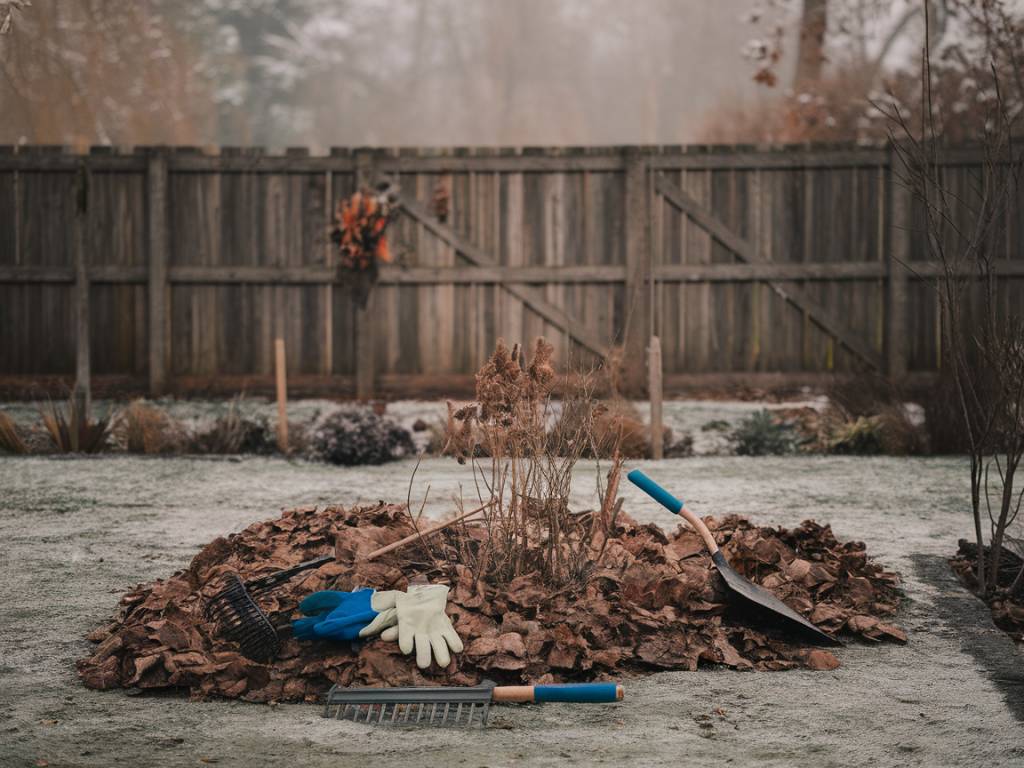As autumn arrives and the last of the summer blooms fade, it’s time to prepare our gardens for winter. If you’re anything like me, the thought of putting your garden to bed for the year can be bittersweet. However, these essential tasks will ensure your garden is ready to thrive again when spring rolls around.
Clean Up Your Garden
The first step in preparing your garden for winter is performing a thorough cleanup. Remove any dead plants, fallen leaves, and debris from your garden beds. Not only does this reduce the risk of pests and diseases overwintering in your garden, but it also improves the general health and appearance of your space.
Be mindful of leaving some natural materials, like stems or seed heads, as they can provide shelter and food for wildlife during the colder months.
Compost and Mulch
Once your garden is cleaned up, it’s time to compost. Composting is a vital process in natural gardening, as it recycles organic waste into a rich soil conditioner that can be used to nourish your plants.
After spreading a layer of compost, apply a thick layer of mulch to your garden beds. Mulch helps to:
- Suppress weeds
- Retain soil moisture
- Regulate soil temperature
- Prevent soil erosion
Consider using natural materials like straw, bark, or leaf mold for your mulch to maintain a connection with the principles of permaculture.
Protect Your Plants
Some plants need extra protection to survive the winter. Here are a few techniques I use:
- Frost Cloths: Use frost cloths or garden fleece to cover tender plants on cold nights.
- Cloche Covers: For young or delicate plants, use cloche covers to create a mini greenhouse effect.
- Mulching: For root vegetables, like carrots and parsnips, leave them in the ground and cover them with a thick layer of mulch to protect from frost.
Don’t forget to water your plants thoroughly before the first heavy frost; hydrated plants are more resistant to cold damage.
Prune and Trim
Late autumn is an ideal time to prune certain plants to encourage healthy growth next spring. However, be cautious and research each plant’s specific needs. Here are some general guidelines:
- Prune deciduous trees and shrubs to remove dead or damaged branches.
- Trim hedges to maintain their shape.
- Cut back perennials after they’ve died back to ground level.
Avoid pruning spring-flowering shrubs as it can reduce their blooms next season.
Planting for the Future
Winter doesn’t mean you have to stop planting. This is the perfect time to plant certain bulbs and bare-root plants:
- Spring Bulbs: Plant bulbs like daffodils, tulips, and crocuses now for vibrant spring displays.
- Bare-root Trees and Shrubs: These can be planted during autumn and winter for strong root establishment before spring growth.
Ensure the soil is well-prepared and adequately mulched around new plantings to protect them over the winter months.
Caring for Garden Equipment
Winter is a great time to care for your gardening tools and equipment. Here’s what I do every year:
- Clean and oil tools to prevent rust and ensure they’re ready for spring.
- Store garden hoses and watering cans indoors to prevent cracking due to freezing temperatures.
- Sharpen blades on shears, pruners, and mowers to keep them in top condition.
Properly maintaining your tools can extend their life and improve their efficiency.
Embrace Wildlife
Encouraging wildlife is a rewarding part of natural gardening. As you prepare your garden for winter, consider what you can do to help beneficial animals:
- Leave some seed heads and dead wood for birds and insects.
- Install bird feeders and baths to provide food and water during the cold months.
- Create a small pond or leave a dish of water for amphibians and small mammals.
- Build or buy bug hotels to offer shelter for beneficial insects like ladybirds and bees.
These steps not only support local wildlife but also help create a balanced and thriving ecosystem.
Reflect and Plan
The quieter winter months provide an excellent opportunity to reflect on the past gardening year. Consider what worked well and what didn’t. Here are some questions I like to ponder:
- Which plants thrived, and which struggled?
- Did I face any pest or disease problems?
- How might I improve soil health and fertility for next season?
Use this time to plan for the upcoming year. As a permaculture enthusiast, I focus on creating a more sustainable and productive environment. This might include adding more companion plants, increasing biodiversity, or enhancing composting techniques.
Preparing your garden for winter is more than a set of tasks; it’s a chance to connect deeply with your garden, ensuring it remains healthy and vibrant. I hope these tips help you embrace the seasonal changes and look forward to a flourishing garden next spring. Happy gardening!
Samanta
